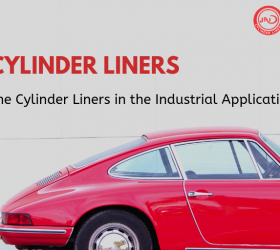A cylinder is the central working part of a reciprocating engine or pump, the space in which a piston travel. Multiple cylinders are commonly arranged side by side in a bank, or engine book, which is typically cast from aluminium or cast iron before receiving precision machine work. The engine cylinder liners can be sleeved (lined with a harder metal) or sleeveless (with a wear-resistant coating such as Nikasil). A sleeveless engine can be referred to as a “parent-bore engine”.
A cylinder’s displacement, or swept volume, may be calculated by multiplying its cross-sectional area (the square of half the bore by pi) by the distance the piston travels within the cylinder (the stroke). The engine displacement may be calculated by multiplying the swept volume of one cylinder by the number of cylinders use in machine.
A piston is seated inside every cylinder by various metal piston ring fitted around its outside surface in machined grooves; typically, two for compressional sealing and one to seal the oil. The rings make close contact with the cylinder walls (sleeved or sleeveless), riding on a thin layer of lubricating oil; necessary to keep the engine from seizing and necessitating a cylinder wall’s durable surface.
During the initial stage of an engine’s life, its early breaking-in or running-in period, small irregularities in the metals are encouraged to gradually form congruent grooves by avoiding extreme operating conditions. After in its life, later mechanical wear has increased the space between the piston and the cylinder (with a consequent decrease in power output). The cylinders may be machined to a slightly larger diameter to receive new sleeves (where applicable) and piston rings, a process is sometimes known as reborning.
Heat Engines
Heat engines, including Stirling engines, are sealed machines using pistons within cylinders to transfer energy from a heat source to a colder reservoir, often using steam or another gas as the working substance. The very first illustration depicts a longitudinal section of a cylinder in a steam engine. The down sliding part at the bottom is the piston, and the upper sliding part is a distribution valve (in this case of the D slide Valve type) that directly steam alternates into either end of the cylinder through the engine cylinder liners. Refrigerator and air conditioner compressors are also heat engines driven in reverse cycle as pumps.
